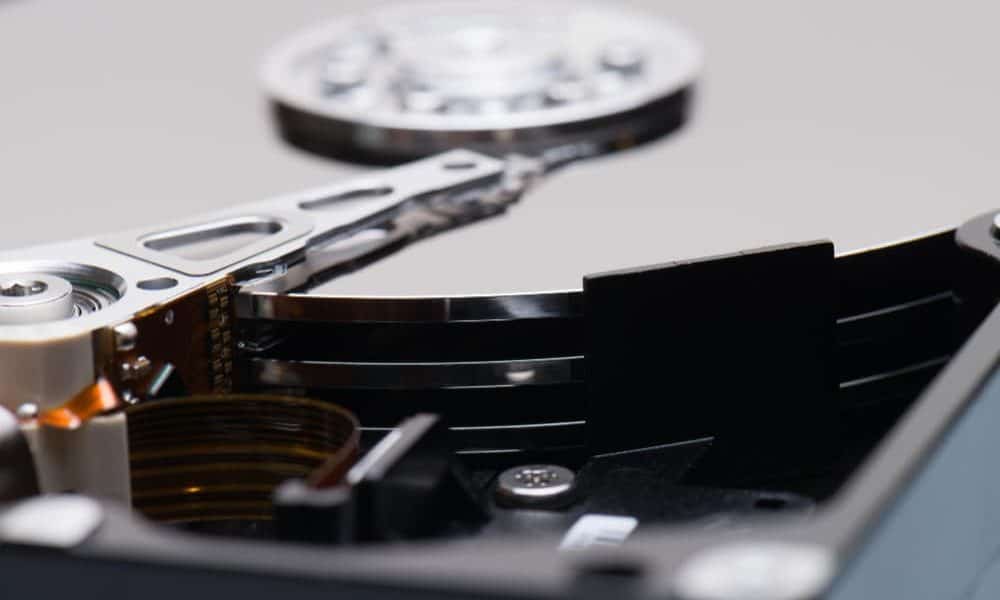How to destroy a hard drive so that data can never be recovered
Digital twin technology has emerged as a transformative concept in the realm of mechanical systems, offering unprecedented opportunities for design, Read more
Historical data analysis for mechanical systems is a crucial aspect of understanding, optimizing, and maintaining the performance of various mechanical Read more
In the ever-evolving landscape of technology, the integration of artificial intelligence (AI) has become a cornerstone for optimizing various processes Read more
In the rapidly evolving landscape of technological innovation, the integration of cloud-based solutions has revolutionized the way industries manage and Read more
When a hard drive is erased, much data remains and can be recovered. Discover how to destroy a hard drive for real and without fear.
In today’s digital age, information security has become a primary concern. Whether for reasons of privacy or securitysometimes the need arises destroy a hard drive so that the data contained in it can never be recovered.
This article provides a detailed guide on the most effective and safest methods to destroy a hard drive, ensuring the protection of personal or sensitive information.
Digital twin technology has emerged as a transformative concept in the realm of mechanical systems, offering unprecedented opportunities for design, Read more
Historical data analysis for mechanical systems is a crucial aspect of understanding, optimizing, and maintaining the performance of various mechanical Read more
In the ever-evolving landscape of technology, the integration of artificial intelligence (AI) has become a cornerstone for optimizing various processes Read more
In the rapidly evolving landscape of technological innovation, the integration of cloud-based solutions has revolutionized the way industries manage and Read more
Understanding the hard drive
What does a hard drive store?
A HDD It is a critical component in computers and servers, acting as the main data storage device. Its ability to save a wide variety of information It is vast, ranging from personal documents, photos, and videos to applications and operating system software. Because of this wide range of data, often sensitive or confidential, understanding how to destroy a hard drive safely and effectively is crucial when planning to dispose or replace equipment.
Risks of improper disposal
Improper disposal of hard drives poses a significant risk of data leaks and security breaches. The possibility of sensitive data such as financial information, personal identifications, medical records or corporate secrets falling into the wrong hands is a major concern. Therefore, know how to destroy a hard drive Properly is essential to prevent unauthorized access to this information.
3 methods to destroy a hard drive forever
The process of destroying a hard drive to ensure that the data stored on it can never be recovered involves several techniques, each with its own procedures and levels of effectiveness.
Formatting and erasing data
Formatting and erasing data are often the first methods that come to mind when thinking about wiping a hard drive. Formatting involves preparing the hard drive for initial use or erasing its contents for reuse.while data wipe generally refers to deleting specific files.
However, what many don’t understand is that these processes do not actually delete data permanently. Instead, they simply remove references to the data in the file systems, making it appear that the disk is empty, although the data still remains on the disk.
Using specialized software, it is possible to recover this “deleted” data. Therefore, for those concerned about the security of confidential or private information, relying solely on formatting and erasing data is insufficient.
Demagnetization or degausser
Demagnetization, performed with a device known as degausseris a much more effective and secure method for data destruction. Hard drives store data on a magnetic medium.
A degausser works by generating a powerful magnetic field that messes up the magnetic orientation of the data, effectively making it unrecognizable and unrecoverable. This process not only erases existing data, but also destroys the service tracks of the hard drive, which are necessary for reading and writing data.
As a result, even with the most advanced data recovery tools, It is impossible to restore data once it has been degaussed. This method is especially recommended for organizations that handle highly sensitive data and require guarantees that the information cannot be recovered once the hard drive is discarded.
physical destruction
Physical destruction of the hard drive It is the most extreme method but also the safest to ensure that the data is completely unrecoverable. This approach involves physically damaging the hard drive to the point that it is impossible to use or repair.
Common techniques include shredding, which breaks the disc into small pieces; perforation, where holes are made in the disk, thus damaging the plates that store the data; and incineration, which uses high temperatures to melt or burn the disc, completely destroying its physical structure and the data stored on it.
Each of these methods ensures that the data on the hard drive cannot be recovered by any means. However, it is important to take environmental and safety considerations into account when opting for physical destruction, as these methods They can be dangerous if not done correctly and have a significant environmental impact due to the toxic materials that electronic components can release.
Safety and environmental considerations
Safety precautions
It is essential to take Safety precautions appropriate when physically destroying a hard drive.
The process may involve risks such as the projection of fragments or exposure to toxic substances. Therefore, it is recommended to use personal protection equipmentsuch as gloves and safety glasses, to minimize the risk of injury.
Environmental impact
Furthermore, it is important to consider the environmental impact of the destruction of a hard drive. Electronic components contain materials potentially harmful to the environment.
Therefore, it is vital to ensure that the remains of the hard drive are disposed of responsiblypreferably through electronics recycling programs, to minimize environmental damage.
Ensure safe deletion
In conclusion, ensuring that data on a hard drive is unrecoverable requires more than just erasing or formatting. Techniques like demagnetization wave physical destruction They are essential to protect sensitive information from potential security breaches.
Furthermore, it is important to take into account the Safety precautions and the environmental impact during this process. By following these recommendations, users can ensure that their personal or corporate data is effectively protected during hard drive removal.










